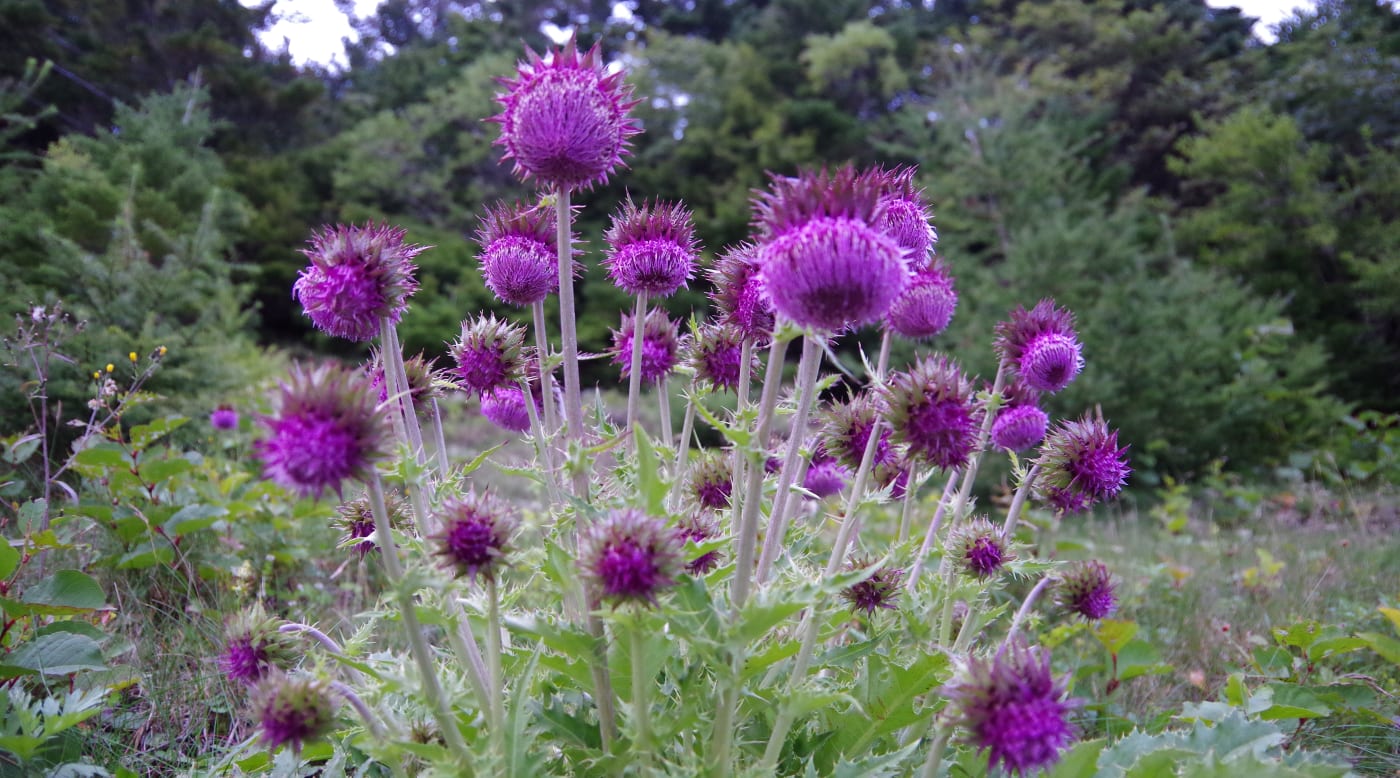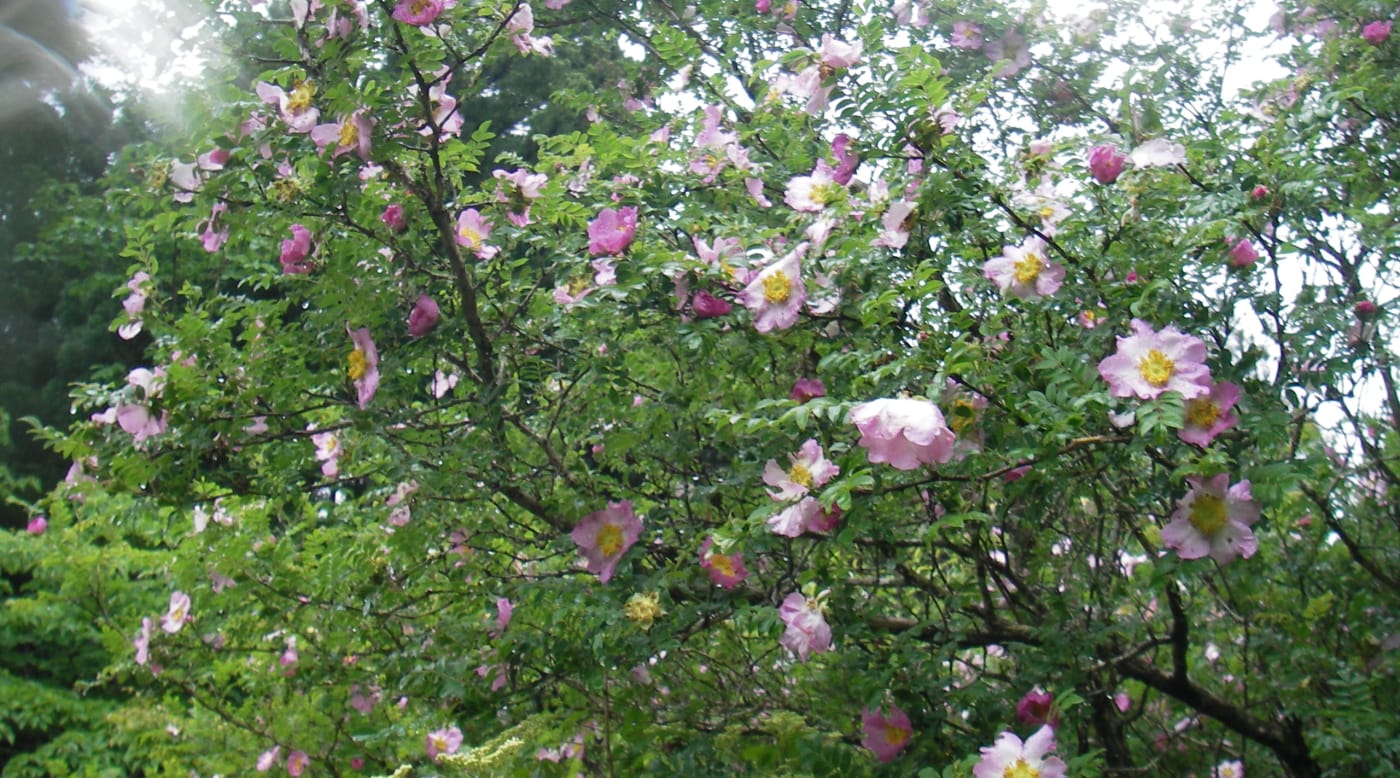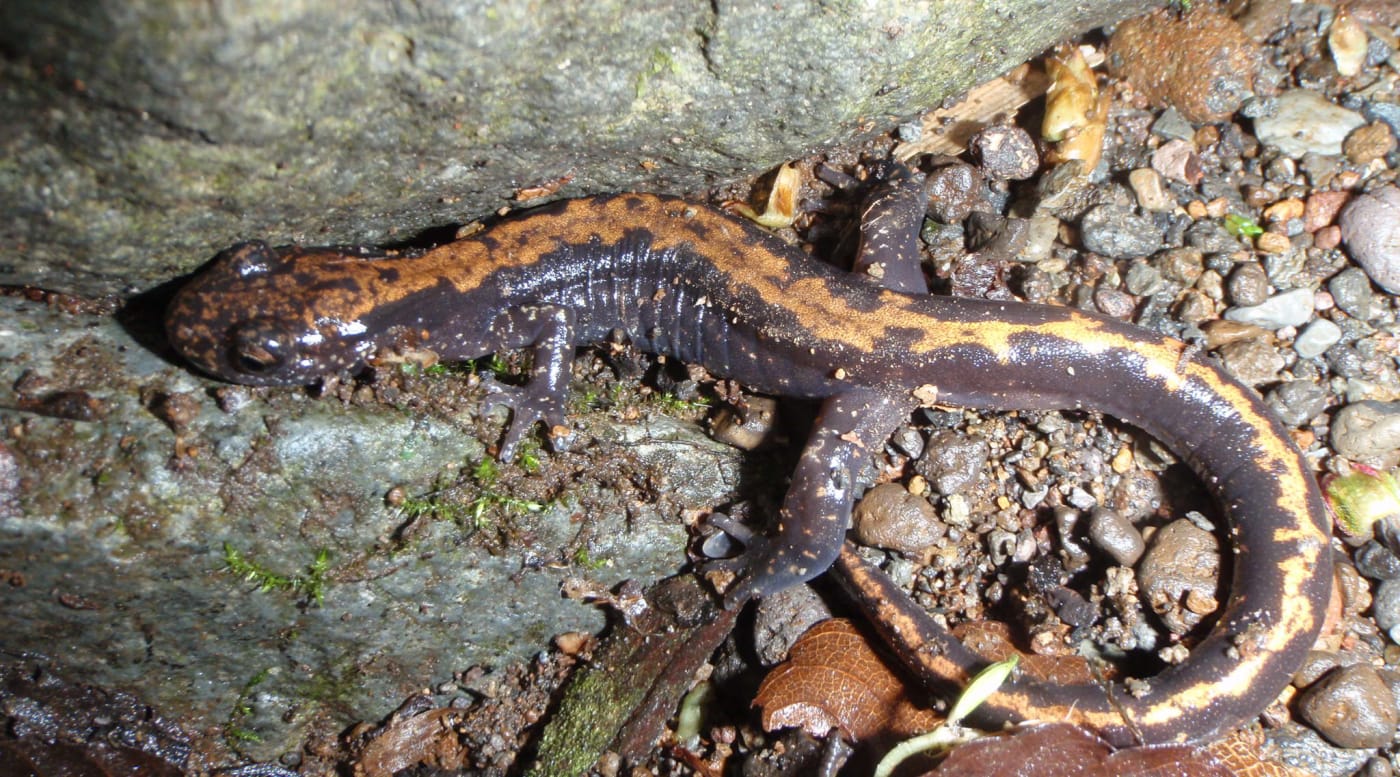The mountains, forests and islands of Fuji-Hakone-Izu National Park are home to a diverse collection of plants and animals. The Hakone area, for example, has deciduous broadleaf trees and grasslands. There are many plants unique to the area as well, such as the sansho-bara (Rosa hirtula) and Fuji cherry. The Izu area has expansive beech forests and flowers such as the azalea-like Amagi-shakunage (Rhododendron degronianum var. amagianum).
The park also has many endemic birds, including the Izu thrush and leaf warbler, while the surrounding seas are an important habitat for ocean creatures like the Indo-Pacific dolphin.
Plants
Fuji Thistle
The Fuji thistle (Cirsium purpuratum) grows around Mount Fuji, and is the biggest Japanese thistle. Its purplish-red flowers bloom from August to October. Locals often eat its edible roots pickled with miso.

Sanshobara
The sanshobara (Rosa hirtula) is a type of rose native to Japan. The name means "prickly ash rose," because its leaves have a striking resemblance to prickly ash leaves. Its light pink flowers bloom between May and July here.

Animals
Japanese Clawed Salamander
The Japanese clawed salamander (Onychodactylus japonicus) is native to Japan, and is found in temperate forests and rivers. Its tail is typically much longer in proportion to its body than those of other salamanders. When they get too hot or cold, these creatures hibernate.

Indo-Pacific Bottlenose Dolphin
Indo-Pacific bottlenose dolphins (Tursiops aduncus) live in the coastal waters of India, East Asia and Australia. Although strikingly similar to the common bottlenose dolphin, this species tends to be smaller and often has black spots on its belly. About 100 Indo-Pacific dolphins inhabit the waters around Mikura Island.



















